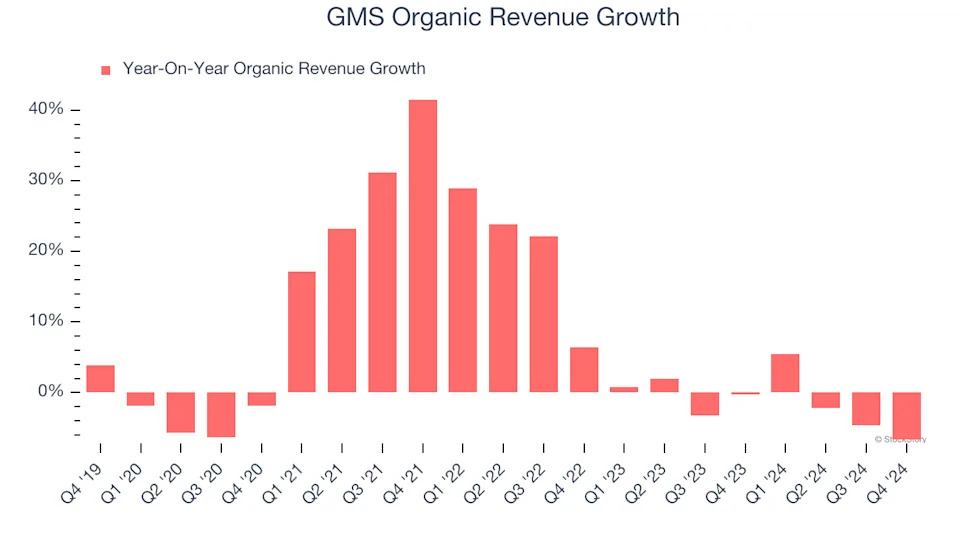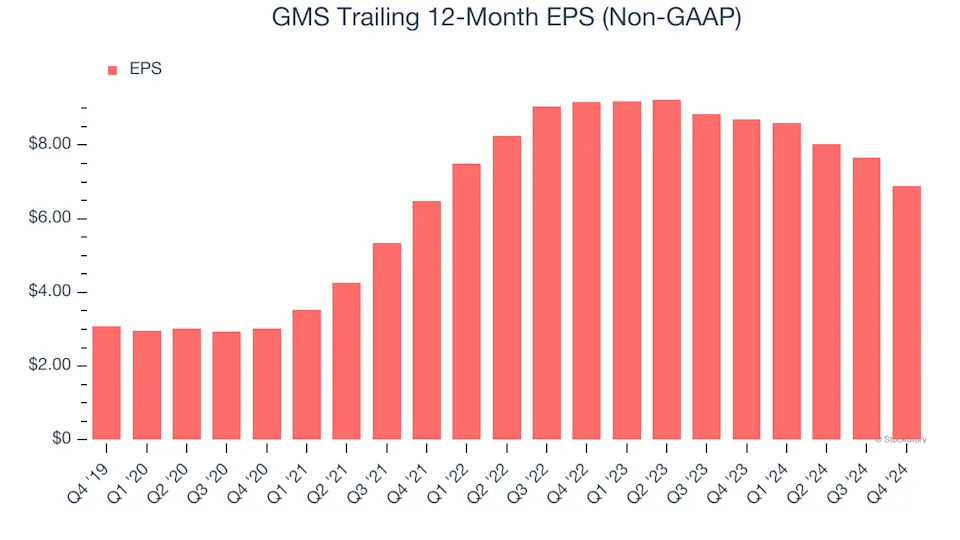
3 Reasons GMS is Risky and 1 Stock to Buy Instead
GMS’s stock price has taken a beating over the past six months, shedding 23.8% of its value and falling to $68.61 per share. This might have investors contemplating their next move.
Is there a buying opportunity in GMS, or does it present a risk to your portfolio? Dive into our full research report to see our analyst team’s opinion, it’s free .
Even with the cheaper entry price, we're swiping left on GMS for now. Here are three reasons why GMS doesn't excite us and a stock we'd rather own.
Why Is GMS Not Exciting?
Founded in 1971, GMS (NYSE:GMS) distributes specialty building materials including wallboard, ceilings, and insulation products, to the construction industry.
1. Core Business Falling Behind as Demand Declines
In addition to reported revenue, organic revenue is a useful data point for analyzing Building Material Distributors companies. This metric gives visibility into GMS’s core business because it excludes one-time events such as mergers, acquisitions, and divestitures along with foreign currency fluctuations - non-fundamental factors that can manipulate the income statement.
Over the last two years, GMS’s organic revenue averaged 1.1% year-on-year declines. This performance was underwhelming and implies it may need to improve its products, pricing, or go-to-market strategy. It also suggests GMS might have to lean into acquisitions to grow, which isn’t ideal because M&A can be expensive and risky (integrations often disrupt focus).

2. Revenue Projections Show Stormy Skies Ahead
Forecasted revenues by Wall Street analysts signal a company’s potential. Predictions may not always be accurate, but accelerating growth typically boosts valuation multiples and stock prices while slowing growth does the opposite.
Over the next 12 months, sell-side analysts expect GMS’s revenue to drop by 3.7%, a decrease from its 2.6% annualized growth for the past two years. This projection is underwhelming and suggests its products and services will face some demand challenges.
3. EPS Took a Dip Over the Last Two Years
While long-term earnings trends give us the big picture, we also track EPS over a shorter period because it can provide insight into an emerging theme or development for the business.
Sadly for GMS, its EPS declined by 13.3% annually over the last two years while its revenue grew by 2.6%. This tells us the company became less profitable on a per-share basis as it expanded.

Final Judgment
GMS isn’t a terrible business, but it doesn’t pass our quality test. After the recent drawdown, the stock trades at 8.9× forward price-to-earnings (or $68.61 per share). While this valuation is optically cheap, the potential downside is big given its shaky fundamentals. We're fairly confident there are better stocks to buy right now. We’d suggest looking at a safe-and-steady industrials business benefiting from an upgrade cycle .